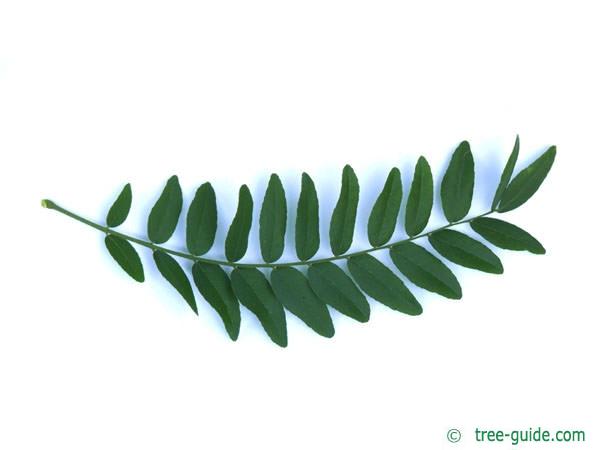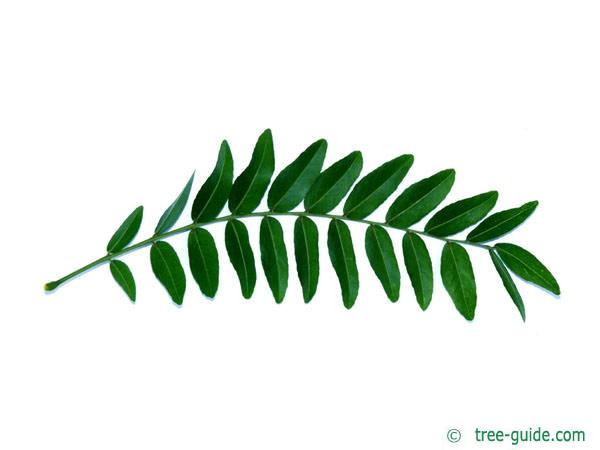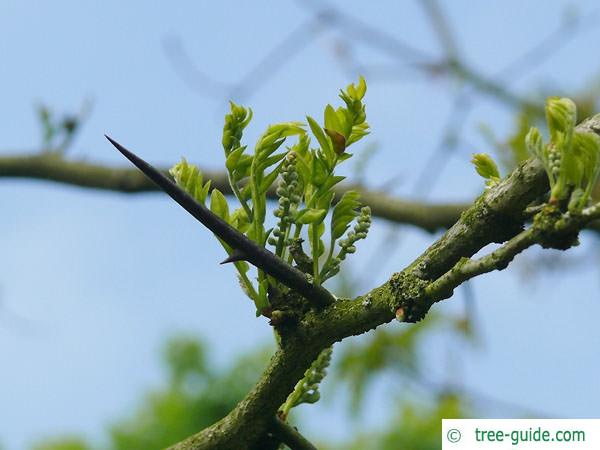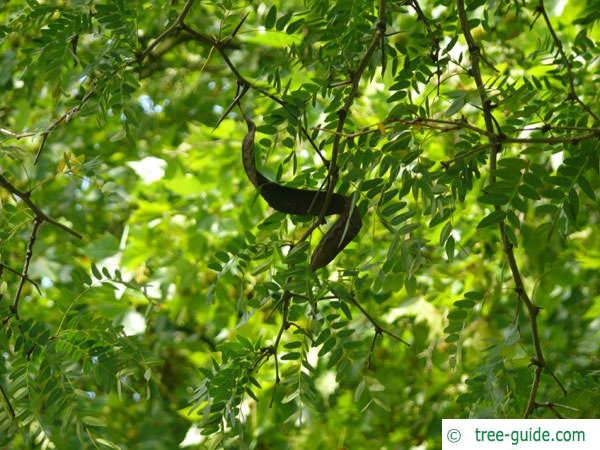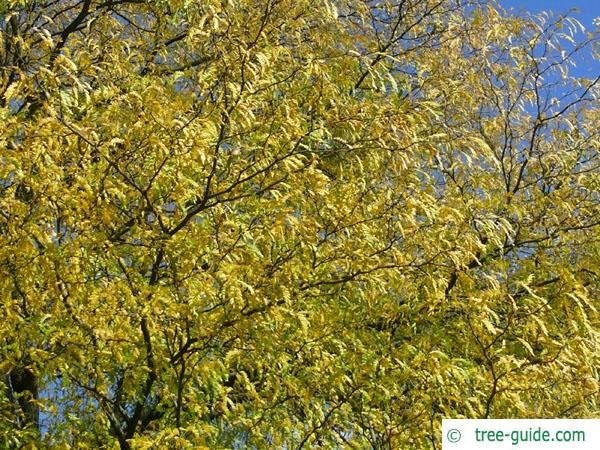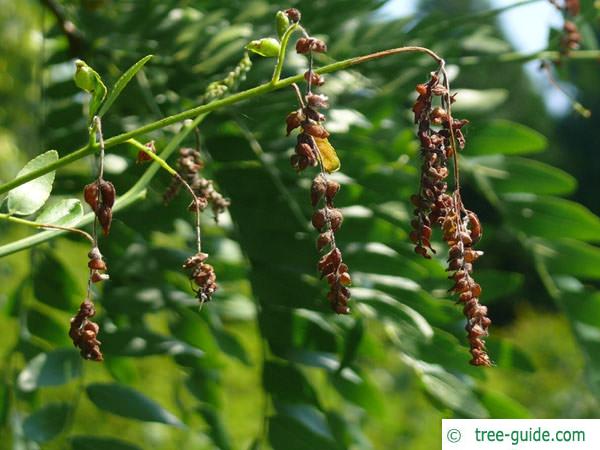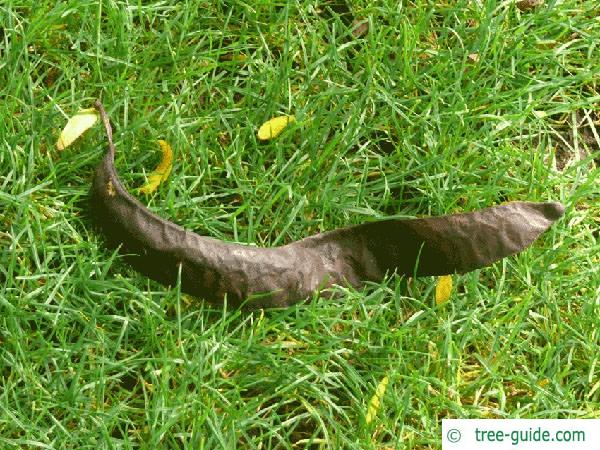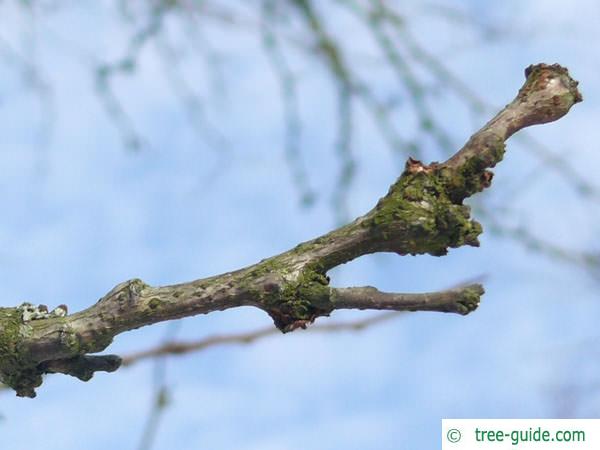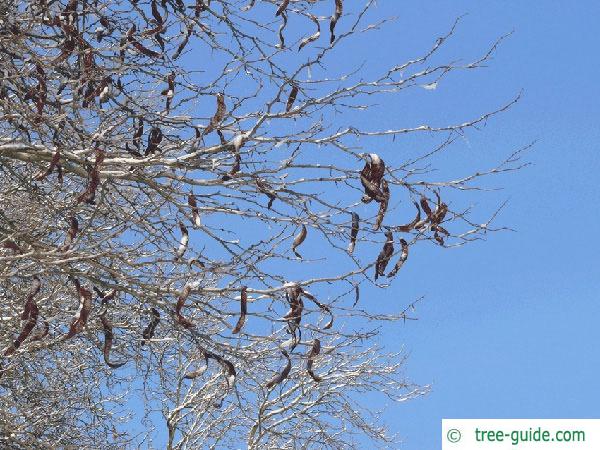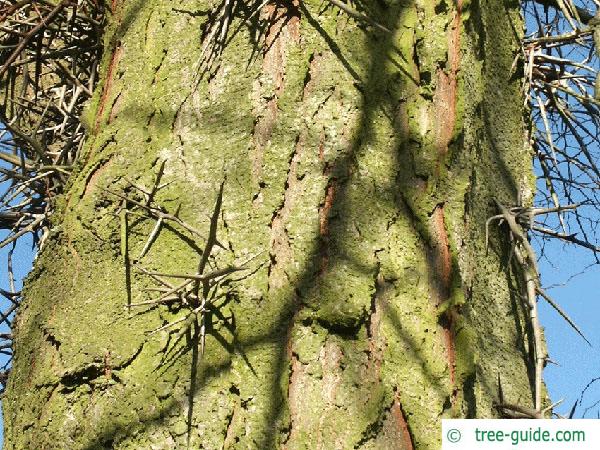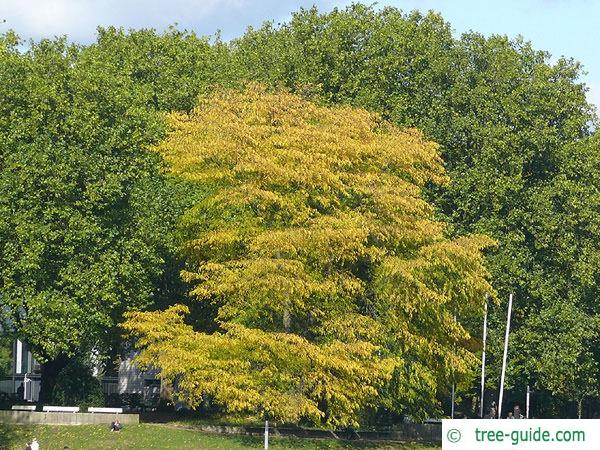Basisdaten
The Honey locust has its origins in the subtropical forests of North and South America, Asia and Africa. There are also varieties without thorns. The leaves are considered to be slightly toxic. The fruits are edible and taste sweet.
Tree profile
The leaves of Honey locust are bipinnately compound with 14 – 26 leaflets. The single leaf is lanceolate with a serrated leaf margin. The leaf is up to 20 cm (7.9 in) long.
The greenish small flowers are arranged in grape-like and sprout along with the leaves.
The dark brown fruit pods are up to 40 cm (15.75 in) long. They are crescent-shaped, conspicuous and falling down. The seeds taste sweet.
The branches are thorny and they takes very well cutting.
single tree in parks and green areas, thorn hedge







